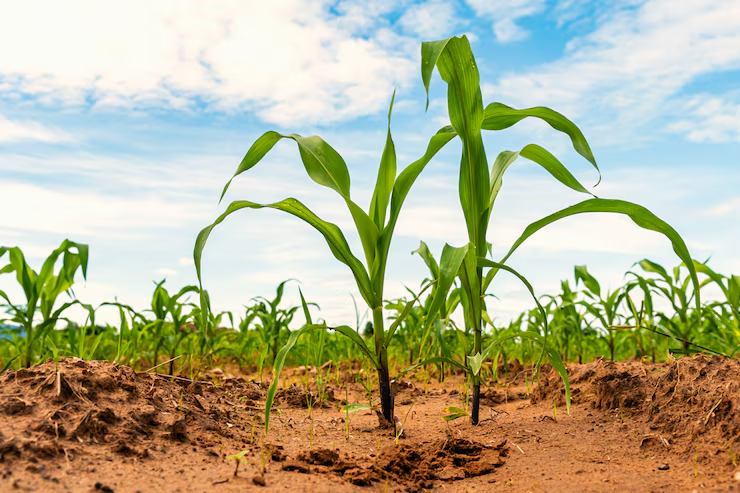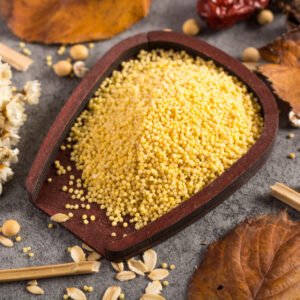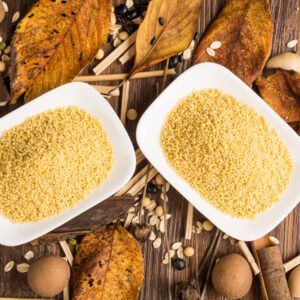Maize, also known as corn, is one of the world’s most important cereal crops and a cornerstone of global agriculture. Understanding the stages of maize growth is essential for farmers aiming to optimize their crop yields and boost productivity, especially when cultivating varieties like white maize. This comprehensive guide walks through each critical phase of maize development, offering valuable insights to help ensure agricultural success with white maize.
Understanding Maize Growth: The Foundation of Agricultural Excellence
Maize growth follows a predictable pattern of development stages, each requiring specific care, nutrition, and management practices. For agricultural producers and farmers working with premium crop nutrition solutions, recognizing these stages enables precise timing of interventions that can significantly impact final yields.
The maize growth cycle spans approximately 100-120 days from planting to harvest, depending on variety and environmental conditions. Each stage presents unique opportunities for optimization through proper agricultural inputs and sustainable farming practices.
Stage 1: Germination and Emergence (VE Stage)
The maize growth journey begins with germination, typically occurring 5-10 days after planting under optimal conditions. During this critical stage, the seed absorbs moisture and begins metabolic processes that will fuel early plant development.
Key Characteristics:
- Radical (primary root) emergence within 2-3 days
- Coleoptile pushes through soil surface
- First true leaf appears within the coleoptile
- Plant establishes initial root system
Optimal Conditions:
- Soil temperature: 50-55°F minimum, 77-95°F optimal
- Adequate soil moisture (75-85% of field capacity)
- Proper planting depth: 1.5-2.5 inches
Nutritional Requirements: During germination, maize relies primarily on seed reserves. However, ensuring adequate soil nutrition through high-quality fertilizers and crop nutrition products supports vigorous emergence and early root development.
Stage 2: Early Vegetative Growth (V1-V6 Stages)
The early vegetative stage represents a critical period for establishing strong plant architecture and root systems. This phase typically spans 3-5 weeks after emergence and sets the foundation for future yield potential.
V1-V3 Stages (Weeks 2-3):
- Development of true leaves with visible leaf collars
- Rapid root system expansion
- Establishment of adventitious root system
- Beginning of photosynthetic activity
V4-V6 Stages (Weeks 4-5):
- Increased leaf area and photosynthetic capacity
- Nodal root development becomes primary root system
- Growing point remains below soil surface
- Tiller development may occur
Critical Management Practices:
- Weed control to minimize competition
- Proper crop nutrition to support rapid growth
- Monitoring for pest and disease pressure
- Ensuring adequate soil moisture
Agricultural inputs during this stage should focus on supporting vigorous vegetative growth while building the plant’s capacity for later reproductive development.
Stage 3: Mid-Vegetative Growth (V7-V12 Stages)
The mid-vegetative stage marks a period of rapid growth and development, with plants reaching approximately 50% of their final height. This stage typically occurs 6-8 weeks after emergence.
Key Developmental Milestones:
- Growing point moves above soil surface (V6-V7)
- Rapid increase in plant height and leaf area
- Ear shoot initiation begins
- Root system reaches maximum extent
Nutritional Demands: Nitrogen uptake accelerates significantly during this stage, making it crucial for farmers to provide adequate nutrition through premium fertilizers and crop nutrition solutions. Proper timing of nitrogen applications can substantially impact final yields.
Environmental Sensitivity: Plants become increasingly sensitive to stress factors including drought, nutrient deficiencies, and extreme temperatures. Sustainable farming practices and consistent monitoring help maintain optimal growing conditions.
Stage 4: Late Vegetative Growth (V13-VT Stages)
The late vegetative stage represents the final phase of plant height accumulation and leaf development. This period typically spans weeks 9-11 after emergence.
Characteristic Features:
- Achievement of final plant height
- Completion of leaf development
- Ear shoot elongation
- Tassel development and emergence
V13-V16 Stages:
- Continued rapid growth and development
- Ear shoots become visible
- Upper leaves reach full size
- Substantial dry matter accumulation
VT Stage (Tasseling):
- Tassel emergence and anthesis preparation
- Transition from vegetative to reproductive growth
- Critical period for yield determination
Management Considerations: Late vegetative growth represents the period of maximum nutrient uptake and water consumption. Agricultural producers must ensure adequate supply of water and nutrients through efficient irrigation and crop nutrition programs.
Stage 5: Reproductive Growth – Pollination (R1 Stage)
The reproductive stage begins with silking and pollination, representing one of the most critical periods in maize development. This stage typically occurs 10-11 weeks after emergence.
Pollination Process:
- Silk emergence from developing ears
- Pollen release from tassels
- Fertilization of ovules
- Initial kernel development
Environmental Factors:
- Temperature stress can severely impact pollination success
- Adequate moisture is essential for silk elongation
- Wind patterns affect pollen distribution
Yield Determination: Successful pollination directly determines kernel number per ear, making this stage crucial for final yield potential. Stress during pollination can result in significant yield losses.
Stage 6: Kernel Development (R2-R6 Stages)
Kernel development represents the grain-filling period, during which individual kernels accumulate dry matter and determine final grain yield and quality.
R2 Stage – Blister Stage:
- Kernels appear as small blisters on the cob
- Rapid cell division and initial starch accumulation
- High moisture content (85-90%)
R3 Stage – Milk Stage:
- Kernels develop milky white fluid
- Continued rapid dry matter accumulation
- Moisture content decreases to 80-85%
R4 Stage – Dough Stage:
- Kernel contents become paste-like
- Starch accumulation accelerates
- Moisture content drops to 70-75%
R5 Stage – Dent Stage:
- Kernel crowns begin to dent
- Rapid moisture loss continues
- Final kernel size determination
R6 Stage – Physiological Maturity:
- Maximum dry matter accumulation achieved
- Black layer formation at kernel base
- Moisture content stabilizes around 30-35%
Nutritional Support: During kernel development, plants require continued access to nutrients, particularly nitrogen and potassium. Premium crop nutrition products can help maintain adequate nutrient supply throughout this critical period.
Optimizing Maize Growth Through Advanced Agricultural Solutions
Successful maize production requires understanding how each growth stage responds to different management inputs. Modern agricultural approaches integrate scientific knowledge with sustainable practices to maximize both productivity and environmental stewardship.
Integrated Nutrition Management: Each growth stage presents specific nutritional requirements that can be addressed through carefully timed applications of high-quality fertilizers and crop nutrition solutions. Understanding these requirements enables farmers to optimize input efficiency while maximizing yields.
Precision Agriculture Techniques: Advanced farming technologies allow for precise monitoring and management of crop conditions throughout the growing season. These approaches enable farmers to respond quickly to changing conditions and optimize resource utilization.
Sustainable Farming Practices: Environmental stewardship and agricultural productivity work together through sustainable farming approaches that maintain soil health while maximizing crop performance. These practices ensure long-term agricultural sustainability.
Environmental Factors Affecting Maize Growth Stages
Understanding how environmental conditions influence each growth stage enables farmers to make informed management decisions and adapt their practices to local conditions.
Temperature Requirements: Different growth stages have varying temperature requirements and sensitivities. Early stages require moderate temperatures for optimal germination and establishment, while reproductive stages are particularly sensitive to extreme heat or cold.
Water Management: Maize water requirements vary significantly throughout the growing season. Early stages require consistent moisture for establishment, while reproductive and grain-filling stages have peak water demands that directly impact yield potential.
Soil Conditions: Soil fertility, structure, and health influence plant development throughout all growth stages. Regular soil testing and appropriate amendments ensure optimal growing conditions for maximum productivity.
The varieties of maize crop in India include yellow maize, white maize, flint maize, dent maize, and popcorn, adapted to various regional climates and uses.
Technology Integration in Modern Maize Production
Contemporary agriculture leverages technological advances to optimize maize production through all growth stages. These innovations help farmers make data-driven decisions that improve both efficiency and sustainability.
Monitoring Systems: Advanced monitoring technologies provide real-time data on plant development, soil conditions, and environmental factors. This information enables precise timing of management interventions for optimal results.
Precision Application Technology: Modern application equipment allows for precise delivery of nutrients, water, and other inputs based on specific plant needs at each growth stage. This precision reduces waste while maximizing effectiveness.
Economic Considerations for Maize Production
Understanding the economic implications of management decisions throughout maize growth stages helps farmers optimize their return on investment while maintaining agricultural sustainability.
Input Timing and Efficiency: Proper timing of inputs throughout maize growth stages maximizes efficiency and return on investment. Understanding when plants can best utilize different nutrients and treatments helps optimize resource allocation.
Yield Optimization Strategies: Each growth stage presents opportunities for yield enhancement through appropriate management practices. Focusing management efforts on critical stages can provide the greatest return on investment.
Future Trends in Maize Production
The agricultural industry continues to evolve, bringing new technologies and approaches to maize production. Understanding these trends helps farmers prepare for future opportunities and challenges.
Sustainable Agriculture Focus: Growing emphasis on environmental sustainability drives innovation in crop nutrition and management practices. These approaches balance productivity with environmental stewardship for long-term agricultural success.
Technological Innovation: Continuing advances in agricultural technology provide new tools for optimizing maize production throughout all growth stages. These innovations help farmers achieve better results with greater efficiency.
Conclusion: Mastering Maize Growth for Agricultural Success
Understanding the stages of maize growth provides the foundation for successful crop production and maximum agricultural productivity. Each stage presents unique opportunities and challenges that require specific management approaches and nutritional support.
From germination through physiological maturity, proper management of maize growth stages allows farmers to optimize yields while promoting sustainable agricultural practices. By combining scientific knowledge with premium agricultural inputs and eco-friendly farming methods, producers can achieve exceptional results without compromising the environment. At CMS Industries, we are committed to supporting farmers with high-quality products and expert guidance to ensure healthy crop development and long-term agricultural sustainability.
The key to successful maize production lies in understanding how each growth stage responds to different management inputs and environmental conditions. This knowledge, combined with high-quality crop nutrition solutions and sustainable farming practices, creates the foundation for agricultural excellence and long-term success.
For farmers seeking to maximize their maize production potential, partnering with experienced agricultural suppliers who understand these growth stages and can provide appropriate support throughout the growing season represents a critical success factor. Through proper planning, quality inputs, and expert guidance, maize producers can achieve outstanding results while contributing to global food security and agricultural sustainability.
Frequently Asked Questions
Q1: How long does it take for maize to complete all growth stages?
Maize typically completes all growth stages in 100-120 days from planting to physiological maturity. Duration varies based on variety, environmental conditions, and management practices affecting overall plant development.
Q2: What is the most critical stage for maize yield determination?
The pollination stage (R1) is most critical for yield determination as it establishes kernel number per ear. Stress during this period can significantly reduce final yields through poor pollination success.
Q3: When should farmers apply nitrogen fertilizer during maize growth?
Nitrogen applications should be timed with peak uptake periods during V6-V12 stages when plants rapidly accumulate biomass. Split applications often provide better efficiency than single applications for optimal results.
Q4: How do environmental conditions affect maize growth stages?
Temperature, moisture, and soil conditions significantly influence stage duration and plant development. Optimal conditions accelerate growth while stress can delay development and reduce yield potential throughout the season.
Q5: What signs indicate successful transition between maize growth stages?
Visible markers include leaf collar development, tassel emergence, silk appearance, and kernel changes. Monitoring these indicators helps farmers time management practices for optimal crop performance and yield maximization.





